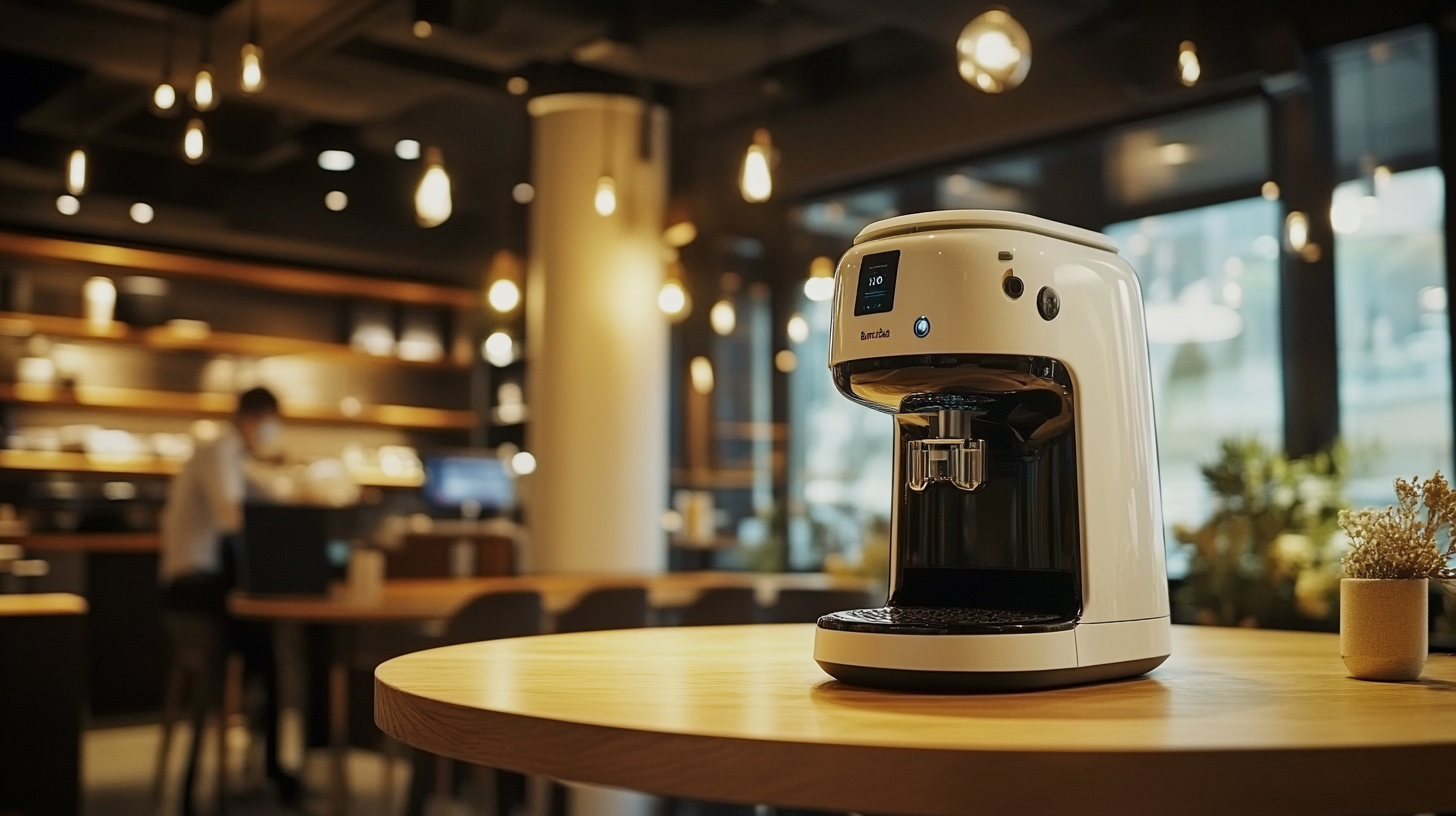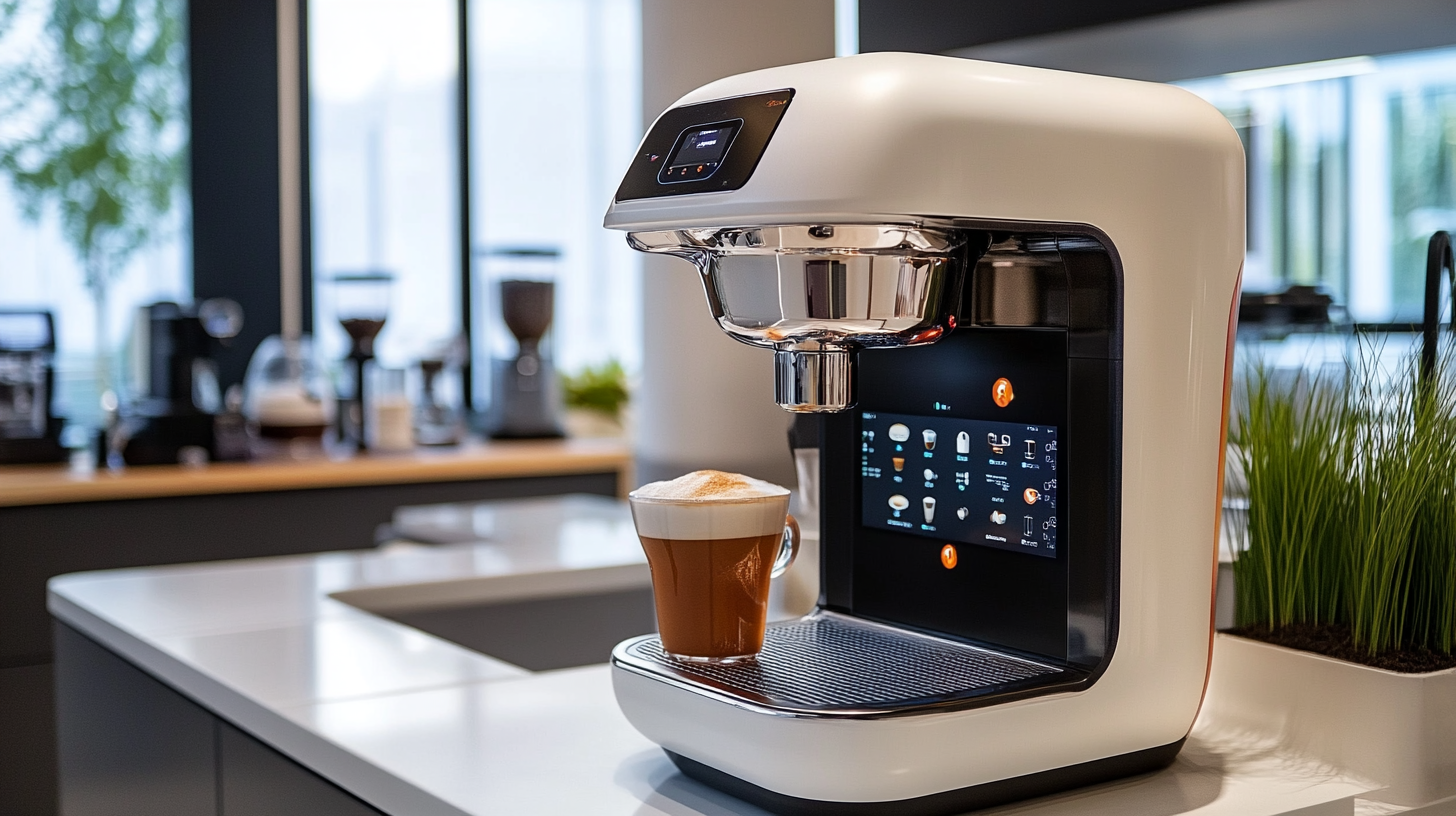How the Best Barista Bot Smart Coffee Machine Is Thriving Amidst US-China Tariff Challenges
In an era marked by escalating trade tensions and tariffs between the United States and China, the innovation and resilience of the Barista Bot Smart Coffee Machine have become a noteworthy case study. While many companies struggle to navigate the complexities of import duties and supply chain disruptions, this cutting-edge coffee machine is thriving against the odds. The Barista Bot combines state-of-the-art technology with the artistry of coffee making, offering consumers a premium experience that transcends national borders. As the demand for high-quality, automated coffee solutions increases, this Chinese-manufactured product is not only managing to sustain its market position but is also experiencing remarkable growth. This blog will explore how the Barista Bot Smart Coffee Machine has leveraged its unique advantages to flourish amid challenging economic conditions, highlighting its role as a game-changer in the global coffee landscape.

The Resilience of Smart Coffee Machines in a Tariff-Heavy Market
In a tariff-heavy market, the resilience of smart coffee machines is increasingly evident, particularly with the rise of barista bots that provide a premium coffee experience without the premium price tag. These innovative machines have swiftly adapted to the challenges posed by fluctuating tariffs and trade tensions, ensuring that consumers still enjoy high-quality beverages. By utilizing advanced technology and streamlined supply chains, smart coffee machines have managed to maintain affordability while consistently delivering exceptional flavor.
Amidst the uncertainties of the US-China trade relationship, certain growth stocks, particularly those with minimal exposure to the volatile market, have emerged as safe havens for investors. These companies boast strong fundamentals and robust balance sheets, allowing them to weather economic storms. The smart coffee machine sector mirrors this resilience, as manufacturers leverage technological advancements to create products that stand out in a crowded marketplace. By focusing on innovation and quality, these businesses continue to thrive, proving that even in challenging times, there are opportunities for success.
Analyzing the Impact of US-China Tariffs on Consumer Electronics
In the face of ongoing US-China tariff challenges, the consumer electronics sector has felt significant pressure, with companies striving to navigate increased costs and shifting market dynamics. The imposition of tariffs has led many to reconsider their supply chains and pricing strategies. For tech companies that rely heavily on imported components, such as those producing high-end smart coffee machines, these tariffs have necessitated a careful reassessment of their operational models. Resilience and adaptability have become key traits for success in this climate.
Among those thriving is the best barista bot smart coffee machine, which has managed to maintain its competitive edge despite external pressures. By leveraging local manufacturing options and investing in innovation, this product has both mitigated the tariff impact and catered to a growing demand for premium coffee experiences. The use of advanced technology not only enhances user experience but also positions the brand as a leader in a saturated market. As consumers increasingly seek quality and convenience, smart coffee machines that can deliver bespoke coffee solutions while navigating operational challenges are likely to continue capturing market share.

Innovation and Adaptation: The Key to Barista Bot's Success
In the face of escalating US-China tariff challenges, Barista Bot has demonstrated remarkable resilience through its commitment to innovation and adaptation. By harnessing cutting-edge technology and integrating advanced algorithms, the smart coffee machine offers users an exceptional brewing experience that stands out in a saturated market. The design incorporates user-friendly interfaces and customizable settings, allowing coffee enthusiasts to enjoy their perfect cup without the hassle often associated with traditional coffee machines.
Moreover, Barista Bot has adapted its supply chain strategies to mitigate the impact of tariffs on imported components. By sourcing materials closer to home and investing in local partnerships, the company has not only reduced costs but also created a more sustainable manufacturing model. This proactive approach has enabled Barista Bot to maintain competitive pricing while continuing to deliver high-quality products that meet and exceed customer expectations. Through strategic innovation and agile practices, Barista Bot exemplifies how companies can thrive even in challenging economic climates.
Market Share of Smart Coffee Machines in the U.S. (2023)
Strategic Partnerships: Navigating the Trade Landscape
In today's rapidly changing trade environment, strategic partnerships have become essential for businesses navigating the complexities of US-China tariff challenges. The best barista bot smart coffee machines illustrate how innovation can thrive even amidst economic pressures. By forming alliances with local distributors and utilizing shared resources, these coffee machines not only ensure supply chain efficiency but also enhance their market reach in both nations.
Moreover, the evolving landscape influenced by geopolitical tensions and changing labor costs requires companies to adapt their strategies continually. Cross-national collaborations allow firms to leverage technological advancements and local insights effectively. As the coffee machine sector exemplifies, embracing strategic partnerships can transform challenges into opportunities, fostering innovation while securing a competitive edge in a polarized world.

Understanding Consumer Preferences Amidst Economic Challenges
The ongoing economic challenges are significantly reshaping consumer preferences in the food and beverage sector. With lingering inflation and geopolitical uncertainties, consumers are becoming more cautious with their spending. Research indicates that a large portion of consumers is prioritizing value and quality when making purchasing decisions, particularly in the fast-moving consumer goods (FMCG) industry. In fact, rising prices have compelled consumers in regions like the Czech Republic to reassess their priorities, leading to modifications in shopping behavior that emphasize budget-friendly options.
To adapt to these changing behaviors, businesses in the coffee machine and broader FMCG sectors should consider implementing strategic changes. **Tip 1:** Leverage consumer data analytics to identify emerging trends in spending habits, which can guide product development and marketing strategies. A study also reveals that consumers increasingly prefer products that are environmentally and socially responsible; thus, investing in sustainable packaging or sourcing can attract a conscientious consumer base.
Additionally, the impact of generative AI on productivity is transforming how companies operate. **Tip 2:** Incorporate AI-driven insights to automate and enhance inventory management, ensuring that popular products remain in stock and reducing waste. By aligning product offerings with consumer demands and leveraging technology, businesses can thrive even amidst economic uncertainties.
How the Best Barista Bot Smart Coffee Machine Is Thriving Amidst US-China Tariff Challenges - Understanding Consumer Preferences Amidst Economic Challenges
| Consumer Preferences | Product Features | Price Range ($) | Sales Growth (%) | Tariff Impact Analysis |
|---|---|---|---|---|
| Convenience | Automated brewing, customizable settings | 200 - 500 | 25 | Low impact, product innovation helped offset |
| Quality | High-quality espresso shots, milk frothing | 300 - 800 | 30 | Moderate impact, some price increase |
| Aesthetics | Sleek design, various color options | 150 - 450 | 15 | Minimal impact, maintained premium branding |
| Sustainability | Eco-friendly materials, energy-efficient | 250 - 600 | 20 | Low impact, attracted eco-conscious consumers |